It’s unusual that I weigh in too heavily on the classics. I guess because they are just that - much-loved, familiar recipes that everyone knows and has their own way of making or taking. A decidedly defined entity already that doesn’t invite edits or alterations.
Just as writers respect and reference the great works of Shakespeare, Austen and Hardy when they create new work, I often start with a classic in mind and pivot off in a new direction. But I don’t tend to share my iterations of classic recipes straight up. Whenever I’m tempted to, I have to ask myself - does the world really need another apple crumble? Another buttermilk scone? And indeed, another Victoria Sponge?
Well, the answer is still very much no. But a few weeks ago, France 2 - the BBC of France, I have since learnt - came over to my flat to film for a feature they ran on Victoria Sponge. I was on TV! I’m huge in France*!
*not true but fun to say
The crew were so lovely. We made my version of a perfect Victoria Sponge, had a little tea party with two of my best friends, and chatted about the originals, evolution and, frankly, British cult status of this chic and simple cake.
And it turns out, I HAVE OPINIONS.
It also turns out quite a lot of you would like my recipe. So here I am with my basically fail safe recipe, and also some hot takes on what makes the best Victoria Sponge. Hop into the comments with yours, I love to hear it.
HOT TAKES
The ratios - for me, the best foundations for a great Victoria Sponge start here. I like to use equal weights of the four core ingredients - eggs, butter, caster sugar and flour. Why? First off, because I am an intrinsically lazy baker and I find the ease of weighing the eggs in their shells, noting that weight, and then using the same quantity of butter, caster sugar and flour to be the most attractive way to kick things off. Second, its scalable, so you can size up or down your batter mix to fit your tin. Need just a smidgen more mixture? Weigh five eggs rather than four! Live a little. Be free - although not too free mind, and if you can, use digital scales to make sure you’re using exact quantities.
The ingredients themselves - 99% of the time, I resent the narrative that has formed within the baking would that you simple have to use the best quantity ingredients. Sure, I like to shop consciously for the season and consider the providence and carbon footprint of the ingredients I buy. But do I think that using organic, handpicked raspberries will give you a drastically different result to using supermarket own frozen fruit? Absolutely not.
However. Because the Victoria Sponge is so simple, the flavour is really only coming from the core ingredients themselves. So this is the 1% of the time where I will try and use best quality eggs and butter. You can taste it, so this is the moment to shop fancy. But don’t do that the rest of the time.
Seasoning - all baked goods need salt, and never is that more important than in a simple Victoria Sponge cake. It seasons the sugar and both clarifies and cuts through the sweetness. It’s also important to season your cream with a little sugar. Why? Because without it, it tastes savoury which can be jarring when used in this context. I hate over sweetened cream, but a little bit is worth using. That said, if you’re using vanilla bean paste, that should do the job of sweetening enough to omit the sugar.
The baking - purists will often tell you that you simply MUST bake your sponge in one tin, and then slice it in half once cooled. I have never understood why you would do this. For me, the sponges bake better when the mixture is halved between two sandwich tins - the bake is quicker and more even, meaning the sponge has less time in the oven and as such, less opportunity for the outsides to dry out while you wait for a tall middle to bake.
The filling - said purists will also tell you that a Victoria Sponge is only a Victoria Sponge if it is filled with strawberry or raspberry jam only. I have absolutely no time for that position. I always add whipped cream. It makes the cake levels better and is, I think, what Queen Victoria - reputedly an ardent sweets lover - would have wanted. Some people like to add vanilla buttercream - that’s not for me in this moment, but I encourage you to make your Victoria Sponge however you like it best. I also sometimes mix up the jams or swap them for roasted fruit, which is usually tarter and more textured, and the cake is all the better for it.
The topping - I will never understand the tradition of topping a Victoria Sponge with caster sugar. It falls off, it’s gritty to eat and it makes your teeth feel horrible. Why, just why? I prefer a dusting of icing sugar, mainly for aesthetically purposes but also because it makes for a nicer eating experience. You could also top with a little more cream and a little of the roasted fruit you’ve filled the cake with for a very chic finish.
Serving the cake - Victoria Sponge is a cake that needs to be eaten fresh. It doesn’t age well, and if you’ve filled it with cream, leftovers should probably be stored in the fridge which will do the sponge no favours. Try and bake and fill the cake on the day you’ll be serving it. A fresh cake rarely results in leftovers, in my experience.
MY PERFECT VICTORIA SPONGE
4 eggs, weighed in their shells
The same weight of unsalted butter, at room temperature
The same weight of caster sugar
The same weight of self-raising flour
1 tsp baking powder
1/2 tsp fine sea salt
150g double or whipping cream
1 tsp vanilla bean paste (optional)
75g raspberry (or other) jam
Icing sugar, to taste
Heat the oven to 170C and grease and line two six inch cake tins with baking paper.
Place the butter and caster sugar in the bowl of a stand mixer, and beat using the paddle attachment for 2-3 minutes until very pale and volumes. Scrape down the sides with a spatula a few times to ensure all the butter is even mixed in.
Add the eggs one at a time, mixing well after each addition. If the mixture starts to curdle (which is usually the result of the fats in the eggs and butter being different temperatures), add 1 tbsp of the flour to stabilise the mixture.
Once all the eggs have been added and incorporated, sieve in the flour, baking powder and salt. Use a spoon to hand mix it in, mixing as little as possible to retain as much air as you can.
Divide the mixture between the tins, level the surface, then place in the centre of the oven and bake for 20-30 minutes. The cakes are done when the surface is a biscuity golden colour, and a toothpick or knife gently inserted into the centre of the cakes comes out clean. Cool for 10 minutes in the tins, then carefully turn out onto a wire rack to cool completely.
Once the cakes are cool, carefully level off the surface of each so you have a nice flat surface to each cake.
Place the cream in the bowl of a stand mixer with the vanilla bean paste, if using, and around 1/2 tbsp of icing sugar if not using. Whip for a few minutes until soft peaks form. Do not over whisk it, as it will continue to thicken as it sits. You can always whisk it more, but you can’t save over whipped cream (although you can make butter, recipe to follow one day).
Spoon the jam onto one of the sponges and spread out, then top with the cream and gently spread that out too. Gently top with the second sponge, then dust with a little icing sugar to finish. Serve ASAP.
What do you think makes the perfect Victoria Sponge?


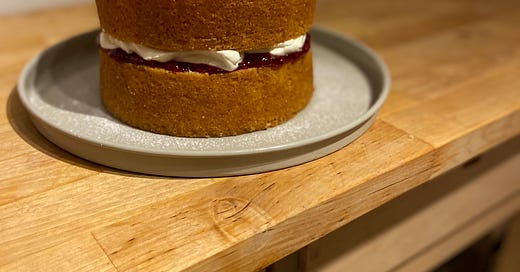



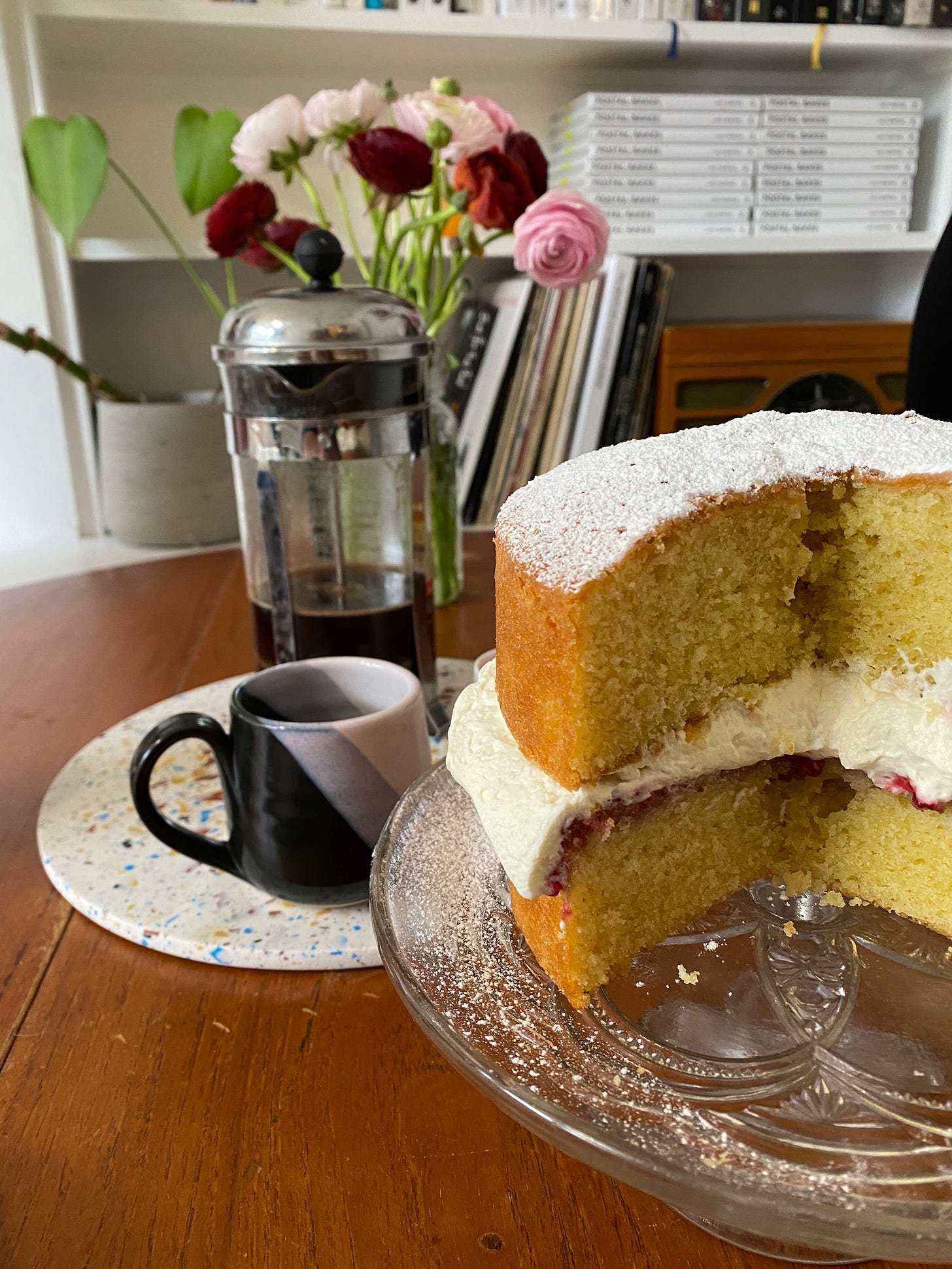
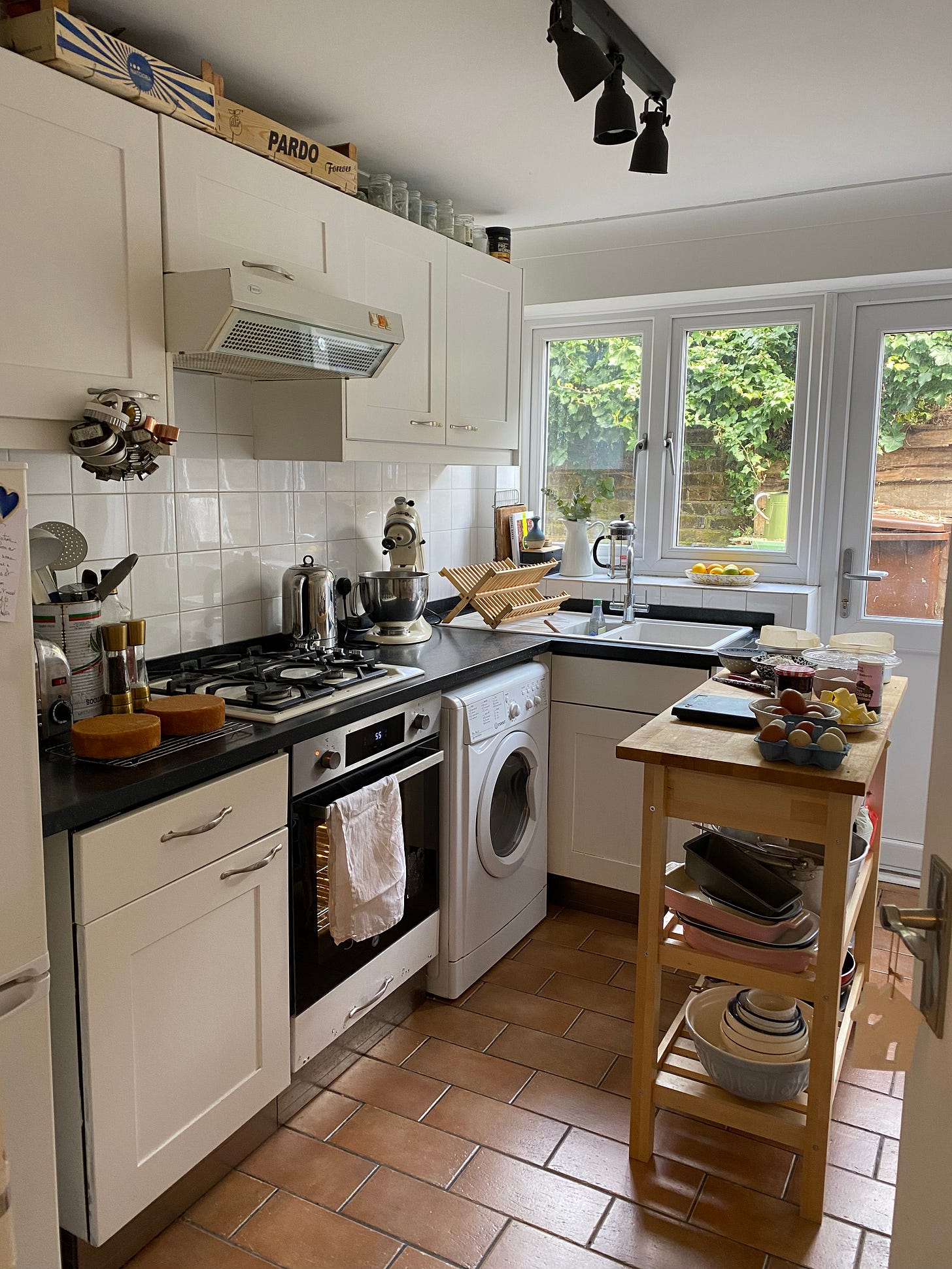

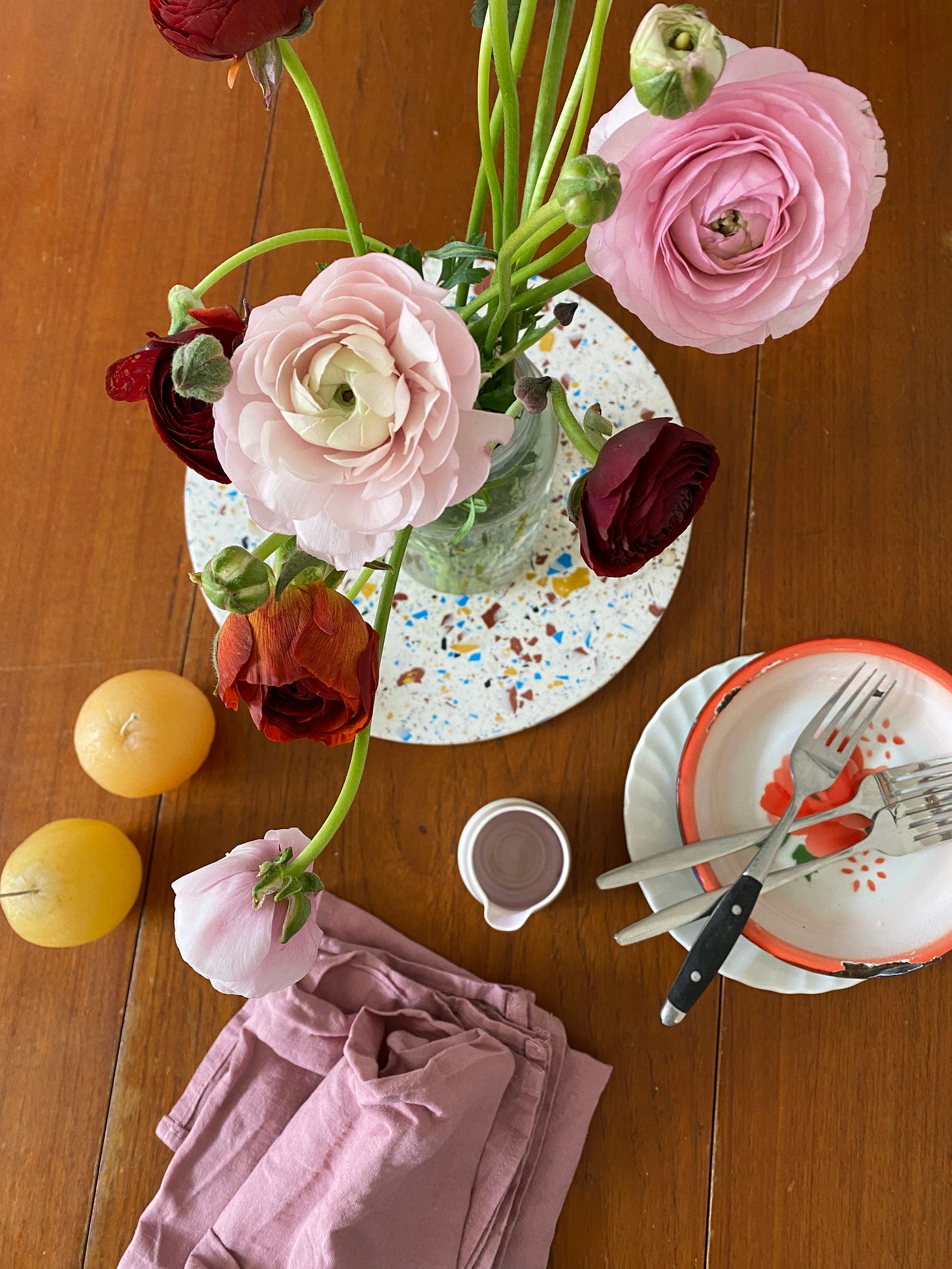
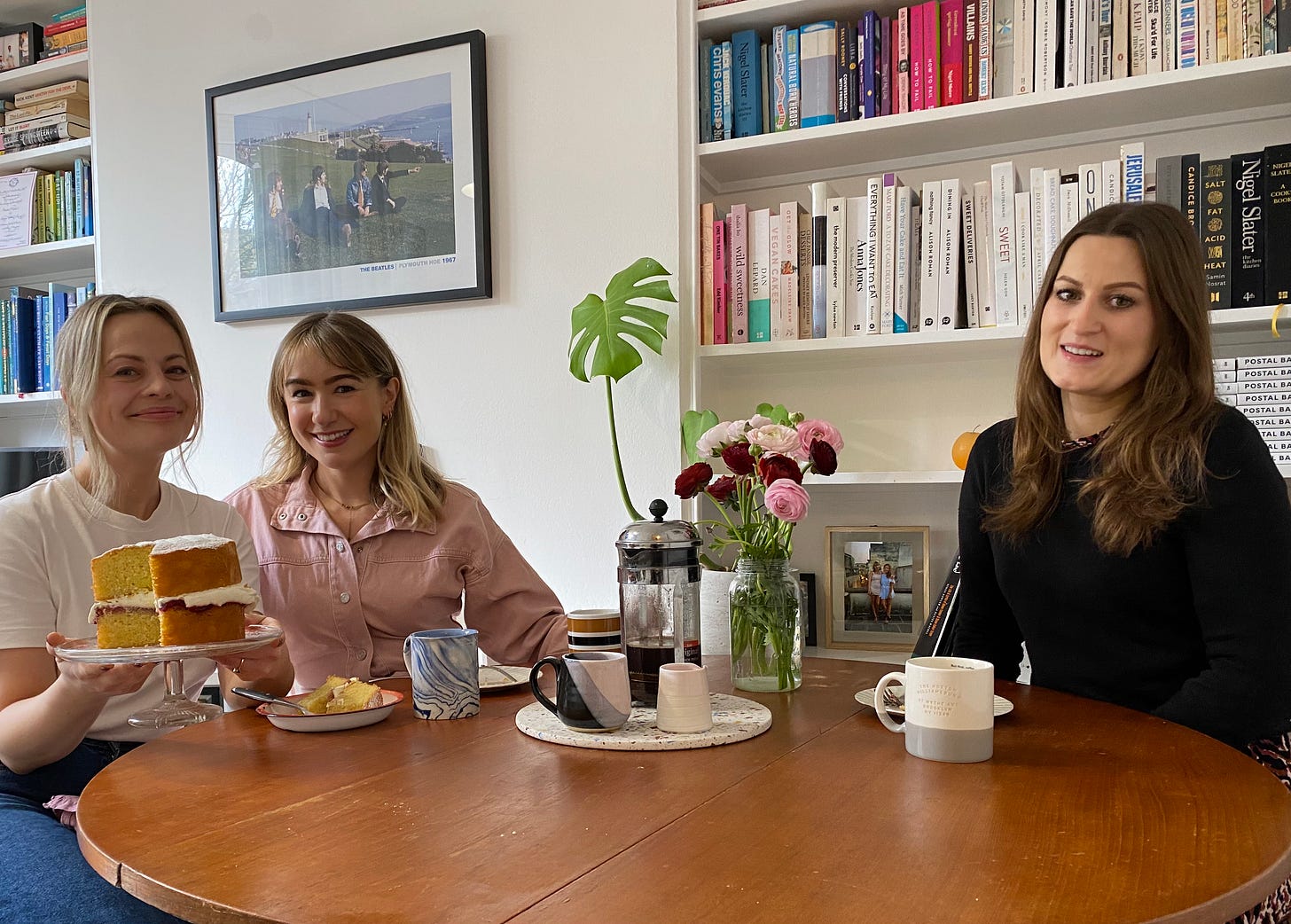
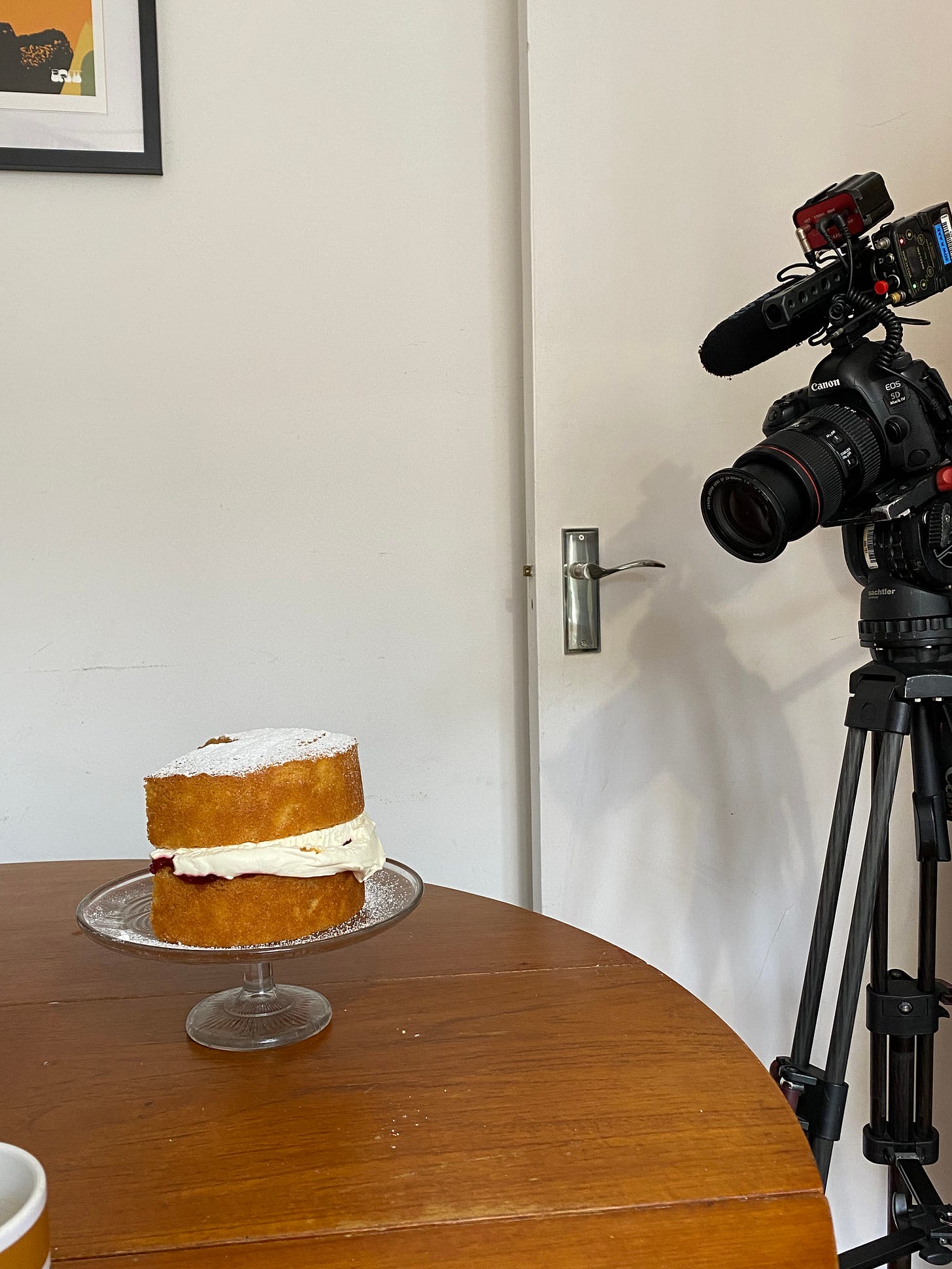
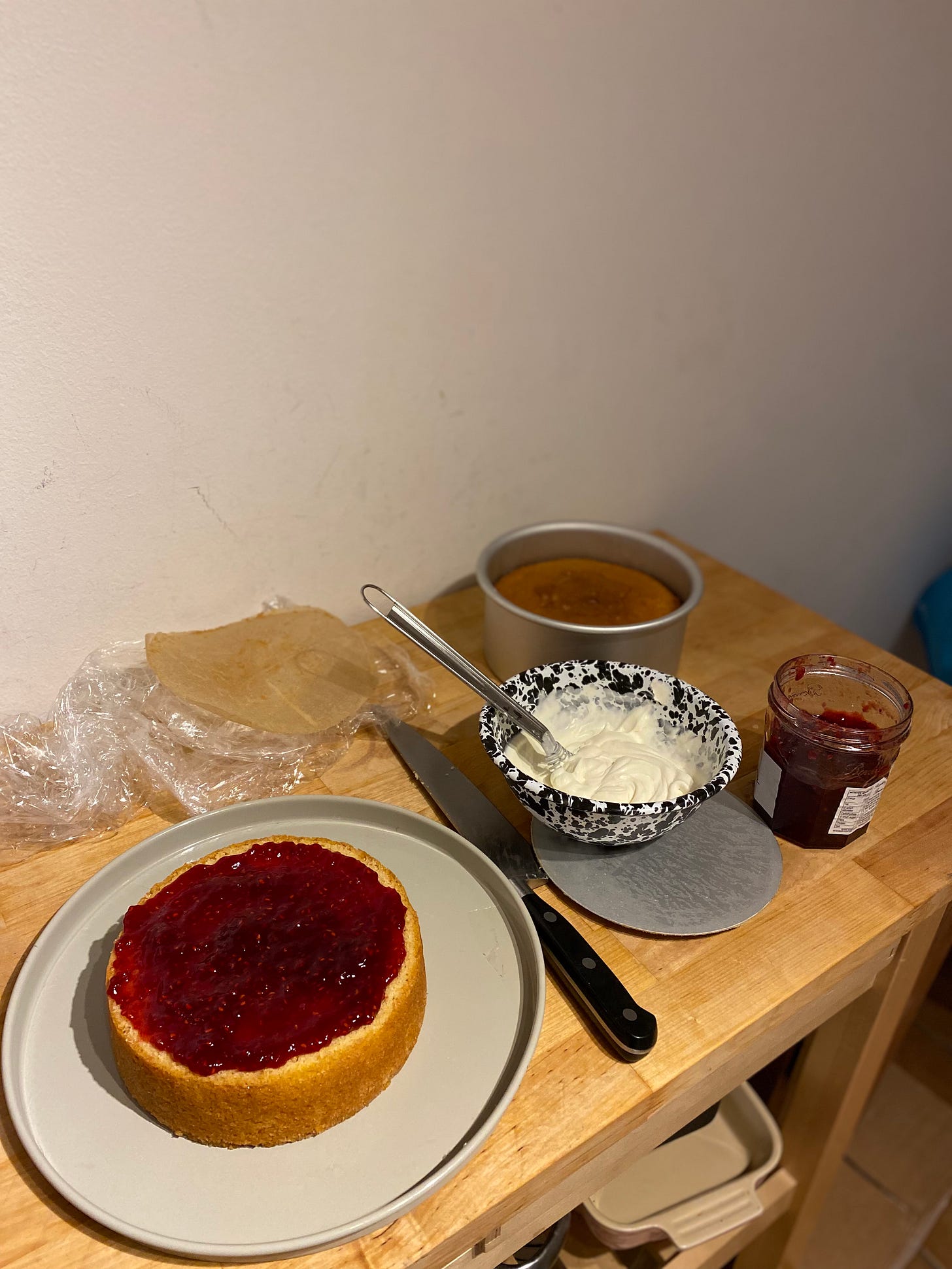
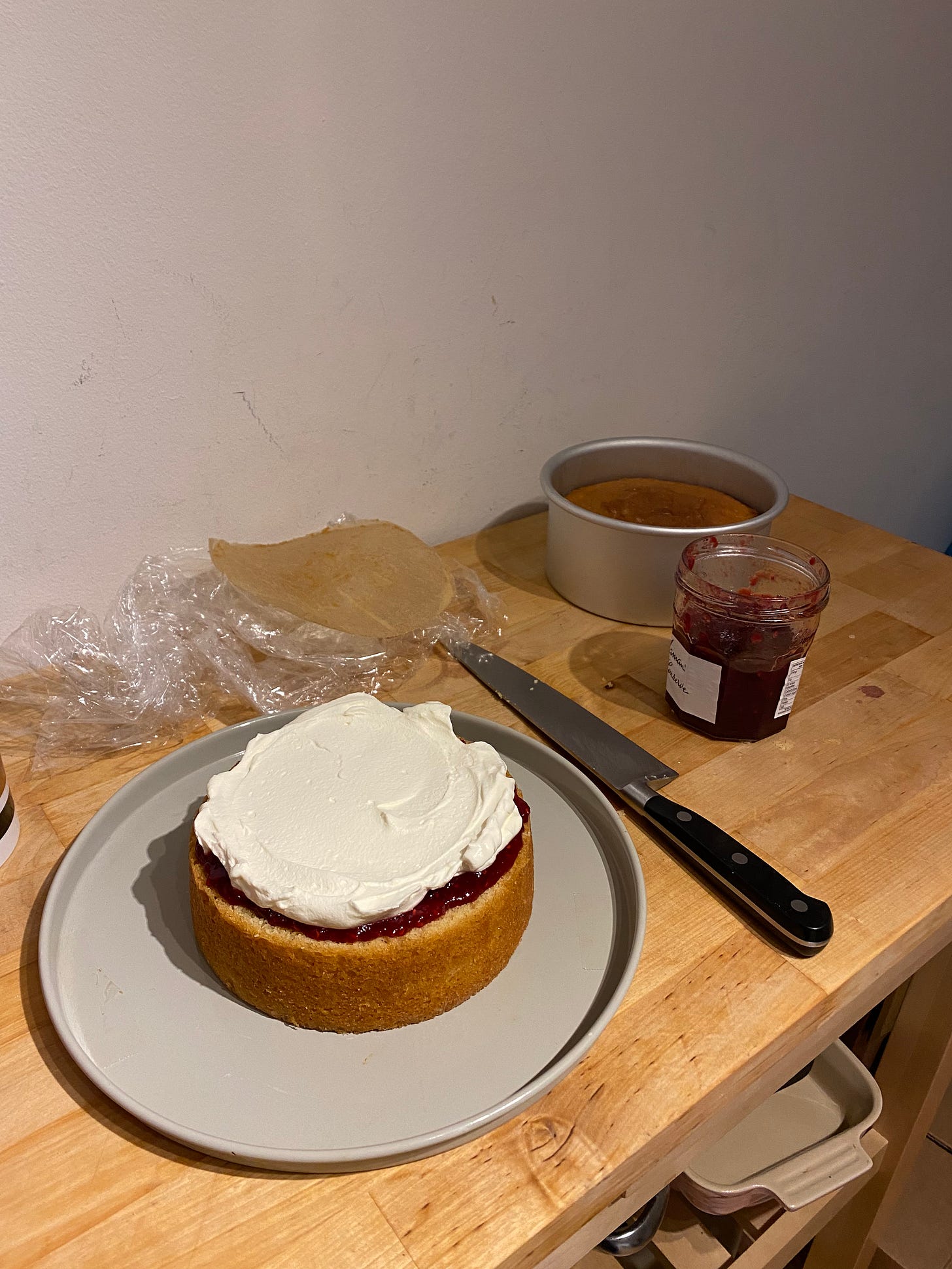
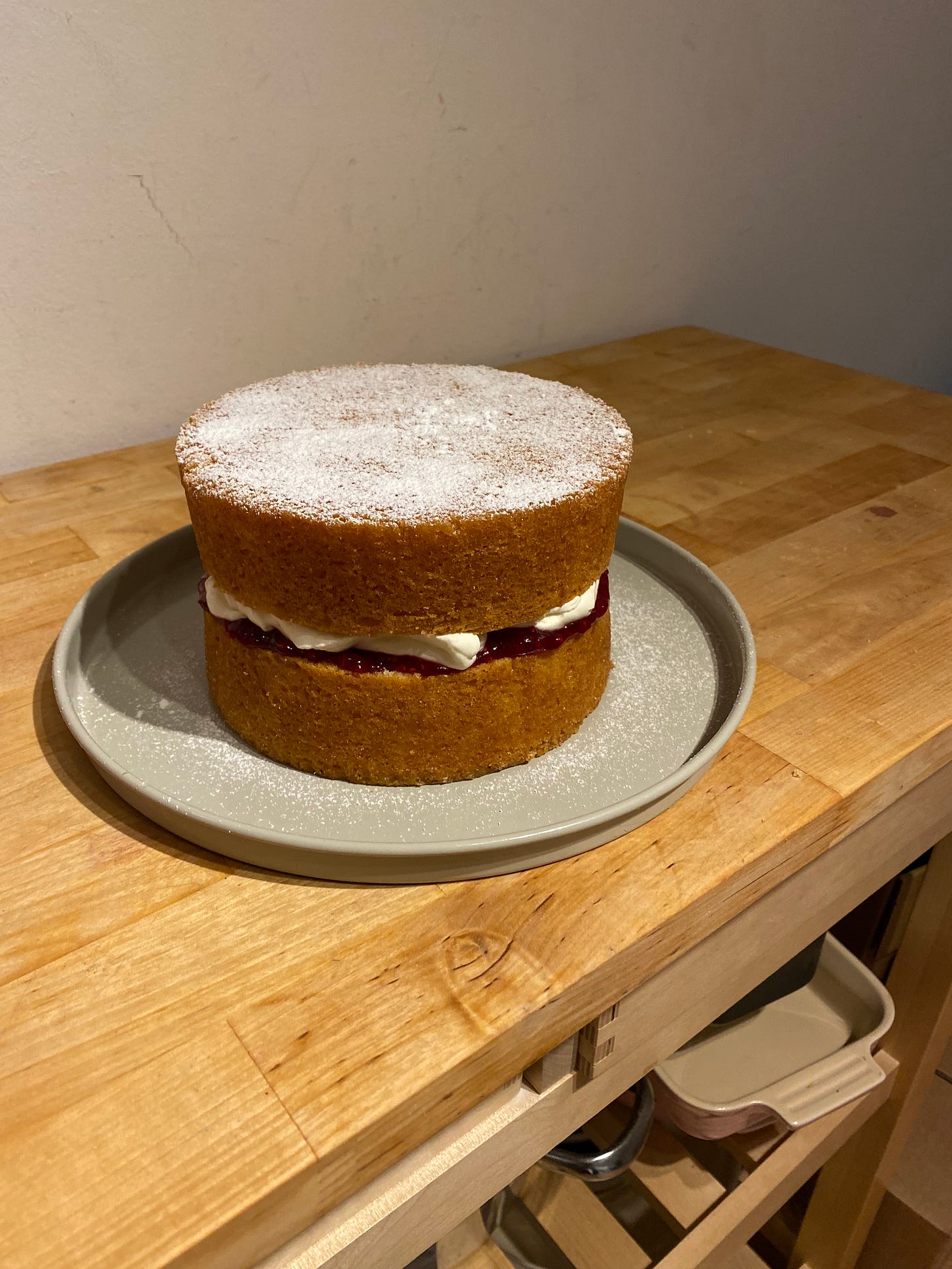
A Victoria Sponge cake is a classic. It’s also the only cake I know how to bake in lbs/oz without hesitation (thanks mum!!)